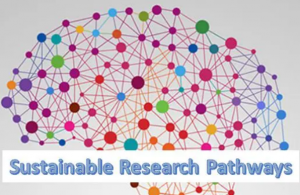Berkeley Lab Receives Multiple 2021 HPCwire Awards
19th Annual HPCwire Readers' and Editors' Choice Awards Presented during SC21
November 16, 2021
Contact: cscomms@lbl.gov
Lawrence Berkeley National Laboratory (Berkeley Lab), the National Energy Research Scientific Computing Center (NERSC), the DOE Joint Genome Institute (JGI), and the Energy Sciences Network (ESnet) have been recognized for outstanding achievements in 2021 by the annual HPCwire Readers’ and Editors’ Choice Awards. NERSC, JGI, and ESnet are U.S. Department of Energy Office of Science user facilities located at Berkeley Lab.
The awards were presented November 16 during the 2021 International Conference for High Performance Computing, Networking, Storage and Analysis (SC21) in St. Louis, Missouri. The Berkeley Lab entities were honored in the following categories:
Editors’ Choice
- NERSC, Top Supercomputing Achievement (for Perlmutter)
- Perlmutter, Top Supercomputing Achievement
- Berkeley Lab (JGI/ExaBiome Project/Exascale Computing Project), Best Use of HPC in Life Sciences (for MetaHipMer)
Readers’ Choice
- NERSC, Top Supercomputing Achievement (for Perlmutter)
- Perlmutter, Top Supercomputing Achievement
- ESnet, Best HPC Collaboration, Academia/Government/Industry (as part of the Engagement and Performance Operations Center [EPOC])
- Sustainable Research Pathways Workforce Diversity & Inclusion Leadership
- Berkeley Lab, Workforce Diversity & Inclusion Leadership (for the Sustainable Research Pathways collaboration)
The Perlmutter supercomputer, unveiled in mid-2021, is an HPE Cray EX system that provides four times the computational power currently available at NERSC, making it among the fastest supercomputers in the world for scientific simulation, data analysis, and artificial intelligence applications.
“We are very excited about Perlmutter Phase 1, the first NERSC supercomputer that delivers most of its computing power through GPUs,” said NERSC Director Sudip Dosanjh upon accepting the awards for Top Supercomputing Achievement. “More than 1,000 scientists from a wide range of disciplines are already using Perlmutter, which has many new technologies to support complex workflows.”

The new Perlmutter system at Berkeley Lab is named in honor of Nobel Prize-winning astrophysicist Saul Perlmutter. (Credit: Thor Swift, Berkeley Lab)
For the Award for Best Use of HPC in the Life Sciences, JGI’s Chief Informatics Officer Kjiersten Fagnan touted the long-standing collaboration between JGI and the ExaBiome team. “They produced fantastic scientific results this year by assembling a collection of large datasets that will enable scientists to explore and collect data in new ways,” she said. “We’re excited to be able to offer this capability to the JGI user community moving forward and to assemble, for the first time, these large environmental microbial datasets for JGI users, which include projects looking at wildfire impacts, carbon cycling, and the microbial dynamics in freshwater lakes over a several-year period."
“We’ve been thrilled to see these enormous multi-terabyte datasets assembled for the first time with MetaHipMer, taking advantage of scalable parallel algorithms and GPU acceleration, and we're preparing for another order of magnitude in scale when running on DOE's exascale computing systems," added Kathy Yelick, a professor of electrical engineering and computer science at UC Berkeley and Berkeley Lab scientist who currently leads the ExaBiome project.

Top: MetaHipMer2 is being used to support a broad array of metagenomics-based user science at the JGI. One of the datasets involves samples from Lake Mendota, a large freshwater lake in Wisconsin. (Credit: Trina McMahon Lab) Bottom: Time series graph with sample dates in the Lake Mendota archive. Filled symbols correspond to dates for which 16S rRNA gene tag data are already available. (Credit: Trina McMahon Lab, JGI 2019 Community Science Program proposal)
As part of a collaboration spanning 15 government, academic, and industrial partners, the Engagement and Performance Operations Center (EPOC) – led by Indiana University and ESnet – was recognized for “Best HPC Collaboration (Academia/Government/Industry).” The award was for the team effort required to move and safeguard more than 50 years of astronomical observation data from the Arecibo Observatory in Puerto Rico following the structural collapse of this scientific resource in 2016.
“The collapse that Arecibo experienced sent ripples through the research and education community because researchers and technology professionals alike knew there was a limited window to act on replicating important observations gathered over the years,” said Jason Zurawski, part of the ESnet/EPOC team. “All the partners were motivated to act, and that removed many barriers to putting solutions in place.”

The Arecibo Observatory in Puerto Rico prior to the 2016 collapse. (Credit: Arecibo Observatory)
In 2015, the Sustainable Horizons Institute and Berkeley Lab began a collaboration to increase the breadth and quality of the computing sciences workforce. This relationship led to the Sustainable Research Pathways program, which connects scientists from underrepresented groups (minorities, women, people with disabilities, first-generation scholars, smaller colleges & universities) with scientists at Berkeley Lab for collaborative research. For their efforts, SRP and Berkeley Lab were each honored by HPCwire for Workforce Diversity & Inclusion Leadership.
“With the SRP program, we have developed a unique approach that brings scientists from underrepresented groups to the Laboratory to make connections with Lab scientists and propose research projects that ultimately bring them to the Lab for internships,” said David Brown, director of Berkeley Lab’s Applied Math and Computational Research Division who has been instrumental in supporting and facilitating the program. “Through SRP, we have been able to access exceptional talent from a much broader set of academic institutions than in the past.”

The annual HPCwire Readers’ and Editors’ Choice Awards are determined through a nomination and voting process with the global HPCwire community, as well as selections from the HPCwire editors. The awards are revealed each year at the annual Supercomputing Conference, which showcases high performance computing, networking, storage, and data analysis. More information about the awards can be found at the HPCwire website.
Related Publications: Hofmeyr S. et al. Terabase-scale metagenome coassembly with MetaHipMer. Sci Rep 10, 10689 (2020). doi:10.1038/s41598-020-67
Related Videos (from 2021 NeLLi New Lineages of Life Seminar): Alicia Clum, JGI on “MetaHipMer for Terabyte Scale Assemblies”; Robert Riley, JGI on “Increasing Taxonomic Diversity of Genome Bins using MetaHipMer for Terabyte Scale Assembly”
About NERSC and Berkeley Lab
The National Energy Research Scientific Computing Center (NERSC) is a U.S. Department of Energy Office of Science User Facility that serves as the primary high-performance computing center for scientific research sponsored by the Office of Science. Located at Lawrence Berkeley National Laboratory, the NERSC Center serves more than 7,000 scientists at national laboratories and universities researching a wide range of problems in combustion, climate modeling, fusion energy, materials science, physics, chemistry, computational biology, and other disciplines. Berkeley Lab is a DOE national laboratory located in Berkeley, California. It conducts unclassified scientific research and is managed by the University of California for the U.S. Department of Energy.
About the Joint Genome Institute
The U.S. Department of Energy Joint Genome Institute, a DOE Office of Science User Facility at Lawrence Berkeley National Laboratory, is committed to advancing genomics in support of DOE missions related to clean energy generation and environmental characterization and cleanup. JGI provides integrated high-throughput sequencing and computational analysis that enable systems-based scientific approaches to these challenges. Follow @jgi on Twitter.
DOE’s Office of Science is the largest supporter of basic research in the physical sciences in the United States, and is working to address some of the most pressing challenges of our time. For more information, please visit science.energy.gov.
About ESnet
The Energy Sciences Network (ESnet) is a high-performance, unclassified network built to support scientific research. Funded by the U.S. Department of Energy’s Office of Science (SC) and managed by Lawrence Berkeley National Laboratory, ESnet provides services to more than 50 DOE research sites, including the entire National Laboratory system, its supercomputing facilities, and its major scientific instruments. ESnet also connects to 140 research and commercial networks, permitting DOE-funded scientists to productively collaborate with partners around the world.
About Computing Sciences at Berkeley Lab
High performance computing plays a critical role in scientific discovery. Researchers increasingly rely on advances in computer science, mathematics, computational science, data science, and large-scale computing and networking to increase our understanding of ourselves, our planet, and our universe. Berkeley Lab’s Computing Sciences Area researches, develops, and deploys new foundations, tools, and technologies to meet these needs and to advance research across a broad range of scientific disciplines.







 Instagram
Instagram YouTube
YouTube